Nato - testebi - test PDF

| Title | Nato - testebi - test |
|---|---|
| Course | Profession of Nursing |
| Institution | George Brown College |
| Pages | 11 |
| File Size | 103.5 KB |
| File Type | |
| Total Downloads | 2 |
| Total Views | 131 |
Summary
test...
Description
STUDY QUESTIONS CHOOSE THE ONE BEST ANSWER 1. A 3-years-old is brought to the emergency department having just ingested a large overdose of diphenhydramine, an antihistaminic drug. Diphenhydramine is a weak base with a pKa of 8.8. It is capable of entering most tissues, including the brain. On physical examination, the heart rate is 100/min, blood pressure 90/50 mm Hg, and respiratory rate 20/min. Which of the following statements about this case of diphenhydramine overdose is most correct? A. Urinary excretion would be accelerated by administration of NH 4Cl, an acidifying agent; B. Urinary excretion would be accelerated by giving of NaHCO3 an alkalinizing agent; C. More of the drug would be ionized at blood pH than at stomach pH; D. Absorption of the drug would be faster from the stomach than from the small intestine; E. Hemodialysis is the only effective therapy. 2. Which of the following terms describes the process by which the amount of active drug in the body is reduced after administration but before entering the systemic circulation? A. Excretion B. First-order elimination D. First-pass effect E. Metabolism F. Pharmacokinetics 3. Which of the following statements best describes the process by which the plasma concentration of a drug declines with first-order kinetics? A. There is only 1 metabolic path for drug elimination B. The half-life is the same regardless of the plasma concentration C. The drug is largely metabolized in the liver after oral administration and has low bioavailability D. The rate of elimination is proportional to the rate of administration at all times E. The drug is distributed to only 1 compartment outside the vascular system
4.
Which of the following statements is true regarding the termination of drug action? A. Drugs must be excreted from the body to terminate their action B. Metabolism of the drug always increases their water solubility C. Metabolism of the drug always abolishes their pharmacologic activity D. Hepatic metabolism and renal excretion are the 2 most important mechanisms involved E. Distribution of a drug out of the bloodstream terminates the drug`s effects
5. hich statement about the distribution of drugs to specific tissues is most correct? A. Distribution to an organ is independent of blood flow B. Distribution is independent of the solubility of the drug in that tissues C. Distribution depends on the unbound drug concentration gradient between blood and the tissue D. Distribution is increased for drugs that are strongly bound to plasma proteins E. Distribution has no effect on the half – life of the drug
6. The pharmacokinetic principle that is characteristic of the elimination of ethanol and high doses of phenytoin and aspirin is called A. Distribution B. Excretion C. First-pass effect D. First-order elimination E. Zero-order elimination 7. The set of properties that characterize the effects of a drug on the body is called A. Distribution B. Permeation C. Pharmacodynamics D. Pharmacokinetics E. Protonation
8. Which of the following statements is most correct regarding clinical trials of new drugs? A. Phase 1 involves the study of a small number of normal volunteers by highly trained clinical pharmacologists B. Phase 2 involves the use of the new drug in a large number of patients (10005000) who have the disease to be treated C. Phase 3 involves the determination of the drug`s therapeutic index by the cautious induction of toxicity D. Phase 4 involves the detailed study of toxic effects that have been discovered in phase 3 E. Phase 2 requires the use of a positive control (a known effective drug) and a placebo
9. Which is the following statements about new drug development is most correct? A. The original manufacturer is protected from generic competition for 20 years after patent approval B. Food supplements and herbal (botanical) remedies are subject to the same FDA regulation as ordinary drugs C. All new drugs must be studied in at least 1 primate species before NDA submission D. Orphan drugs are drugs that are no longer produced by the original manufacturer E. Phase 4 (surveillance) is the most rigidly regulated phase of clinical drug trials
PHARMACOKINETICS 10. Mr Jones is admitted to the hospital with cough, shortness of breath, and fever. History, physical examination, and culture of the sputum lead to a diagnosis of pneumonia due to gram-negative bacteria. The antibiotic tobramycin is ordered. The clearance and Vd of tobramyc in Mr Jones are 80 mL/min and 40 L, respectively.
1. What maintenance dose should be administered intravenously every 6h to eventually obtain average steady-state plasma concentrations of 4 mg/L? A. 0.32 mg B. 19,2 mg C. 115 mg D. 160 mg E. 230 mg 11. If you wish to give Mr Jones an intravenous loading dose to achieve the therapeutic plasma concentration of 4 mg/L rapidly, how much should be given? A. 0.1mg B. 10 mg C. 115.2 mg D. 160 mg E. None of the above 12. Despite your careful adherence to basic pharmacokinetic principles, your patient on digoxin therapy has developed mild digitalis toxicity. The plasma digoxin level is now 4 ng/mL. Renal function is normal, and the plasma t1/2 for digoxin in this patient is 1,5 days. How long should you withhold digoxin to reach a safer yet probably therapeutic level of 1 ng/ml? A. 1.5 days B. 2.5 days C. 3 days D. 5 days E. 6 days 13. A 30-years-old men is brought to the emergency department in a deep coma. Respiration is severely depressed and he has pinpoint pupils.
His friends state that he self-administered a large dose of morphine 6 h earlier. An immediate blood analysis shows a morphine blood level of 0.25 mg/L. Assuming that the Vd of morphine in this patient is 200 L and the half-life is 3h, how much morphine did the patient inject 6 h earlier? A. 25 mg B. 50 mg C. 100 mg D. 200 mg E. Not enough data to predict 14. A normal volunteer will receive a new drug in a phase 1 clinical trial. The clearance and Vd of the drug in this subject are 1.386 L/h and 80 L, respectively. What is the predicted half-life of the drug in this subject? A. 83 h B. 77 h C. 58 h D. 40 h E. 0.02 h
15. A city clinic is considering the substitution of generic drugs to save money. The clinical pharmacologist is asked to advise on the bioavailability of the generic products. Which of the following statements is most correct? A. Bioavailability is 100% for oral preparations that are not metabolized in the liver B. Bioavailability is calculated from the peak concentration of drug divided by the dose administered
C. Bioavailability is important because bioavailability determines what percentage of the administered dose reaches the systemic circulation D. Bioavailability is equal to 1 (100%) only for drugs administered by a parenteral route. 16. Lipid solubility and drugs A. more of the weak acid drug will be in the lipid-soluble form at alkaline pH. B. more of the weak acid drug will be in the lipid soluble form at acid pH. C. more of the weak base drug will be in the lipid soluble form at alkaline pH D. A & C E.
B&C
17. Primary site for drug metabolism: A. Stomach B. Small intestine C. Kidney D. Muscle E. Liver
18. A drug, given as a 100 mg single dose, results in a peak plasma concentration of 20μg/mL. The apparent volume of distribution is (assume a rapid distribution and negligible elimination prior to measuring the peak plasma level): A. 0.5L. B. 1L.
C. 2L. D. 5L. E. 10L.
19. A heart failure patient shows digoxin toxicity. She received 125 mcg as standard dose. Serum levels were reported to be 2 ng /mL (2mcg/L). Target therapeutic level is 0.8ng/mL. What dose should she receive? A. 25 mcg. B. 50 mcg. C. 75 mcg. D. 100 mcg. E. 125 mcg.
20. The addition of glucuronic acid to a drug: A. Decreases its water solubility. B. Usually leads to inactivation of the drug. C. Is an example of a Phase Ireaction. D. Occurs at the same rate in adults and newborns. E. Involves cytochrome P450.
DRUG METABOLISM 21. Drug metabolism in humans usually results in a product that is A. Less lipid soluble than the original drug B. More likely to distribute intracellularly C. More likely to be reabsorbed by kidney tubules
D. More lipid soluble than the original drug E. Less water soluble than the original drugs 22. Which of the following factors is likely to increase the duration of action of a drug that is metabolized by CYP3A4 in the liver? A. Chronic administration of Phenobarbital before and during therapy with the drug in question B. Chronic therapy with cimetidine C. Displacement from tissue – binding sites by another drug D. Increased cardiac output E. Chronic administration of rifampin
23. Which of the following is a phase II drug-metabolizing reaction? A. B. C. D. E.
Acetylation Deamination Hydrolysis Oxidation Reduction
24. Which of the following drugs is associated with slower metabolism in European Americans and African Americans than in most Asians? A. B. C. D. E.
Cimetidine Procainamide Propranolol Rifampin Succinylcholine
25. Which of the following drugs may inhibit the hepatic microsomal P450 responsible for warfarin metabolism? A. Amiodarone B. Ethanol C. Phenobarbital D. Procainamide E. Rifampin
26. Which of the following drugs has higher first-pass metabolism in men than in women? A. Cimetidine B. Ethanol C. Ketoconazole D. Procainamide E. Quinidine F. Ritonavir G. Succinylcholine H. Verapamil 27. Which of the following agents, when used in combination with other anti-HIV drugs, permits dose reductions? A. Cimetidine B. Efavirenz C. Ketoconazole D. Procainamide E. Quinidine F. Ritonavir G. Succinylcholine H. Verapamil
28. Which antibiotic is a potent inducer of hepatic drug-metabolizing enzymes? A. B. C. D. E.
Ciprofloxacin Cyclosporine Erythromycin Rifampin Tetracycline
29. A hypertensive patient has been using nifedipine for some time without untoward effects. If he experiences a rapidly developing enhancement of the antihypertensive effect of the drug, it is most likely due to which of the following? A. Concomitant use of antacids B. Foods containing tyramine C. Furanocoumarins in grapefruit juice D. Induction of drug metabolism E. Over-the-counter decongestants...
Similar Free PDFs

Nato - testebi - test
- 11 Pages

NATO Reading Notes
- 25 Pages

Nato 1968 software engineering report
- 136 Pages
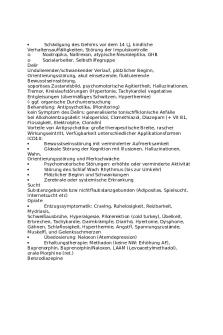
Test - test
- 1 Pages
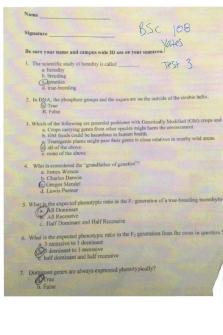
Yates Test 3 - Test
- 7 Pages
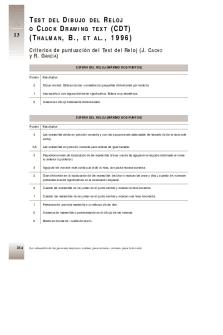
Test-reloj - test
- 4 Pages
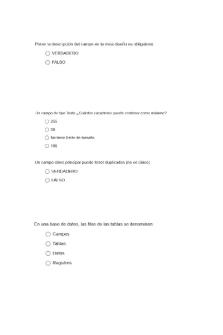
Test Access 2010 - Test
- 6 Pages
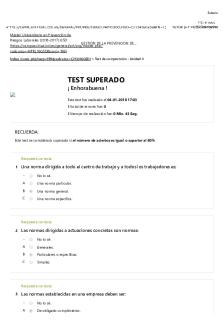
Resultado Test 842 - TEST
- 2 Pages
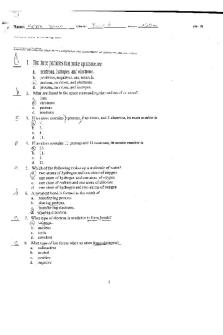
AP. Bio. Test - test
- 4 Pages
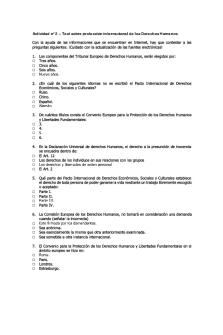
Test
- 4 Pages
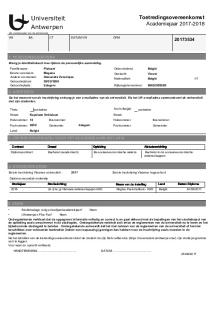
TEST
- 1 Pages
Popular Institutions
- Tinajero National High School - Annex
- Politeknik Caltex Riau
- Yokohama City University
- SGT University
- University of Al-Qadisiyah
- Divine Word College of Vigan
- Techniek College Rotterdam
- Universidade de Santiago
- Universiti Teknologi MARA Cawangan Johor Kampus Pasir Gudang
- Poltekkes Kemenkes Yogyakarta
- Baguio City National High School
- Colegio san marcos
- preparatoria uno
- Centro de Bachillerato Tecnológico Industrial y de Servicios No. 107
- Dalian Maritime University
- Quang Trung Secondary School
- Colegio Tecnológico en Informática
- Corporación Regional de Educación Superior
- Grupo CEDVA
- Dar Al Uloom University
- Centro de Estudios Preuniversitarios de la Universidad Nacional de Ingeniería
- 上智大学
- Aakash International School, Nuna Majara
- San Felipe Neri Catholic School
- Kang Chiao International School - New Taipei City
- Misamis Occidental National High School
- Institución Educativa Escuela Normal Juan Ladrilleros
- Kolehiyo ng Pantukan
- Batanes State College
- Instituto Continental
- Sekolah Menengah Kejuruan Kesehatan Kaltara (Tarakan)
- Colegio de La Inmaculada Concepcion - Cebu




